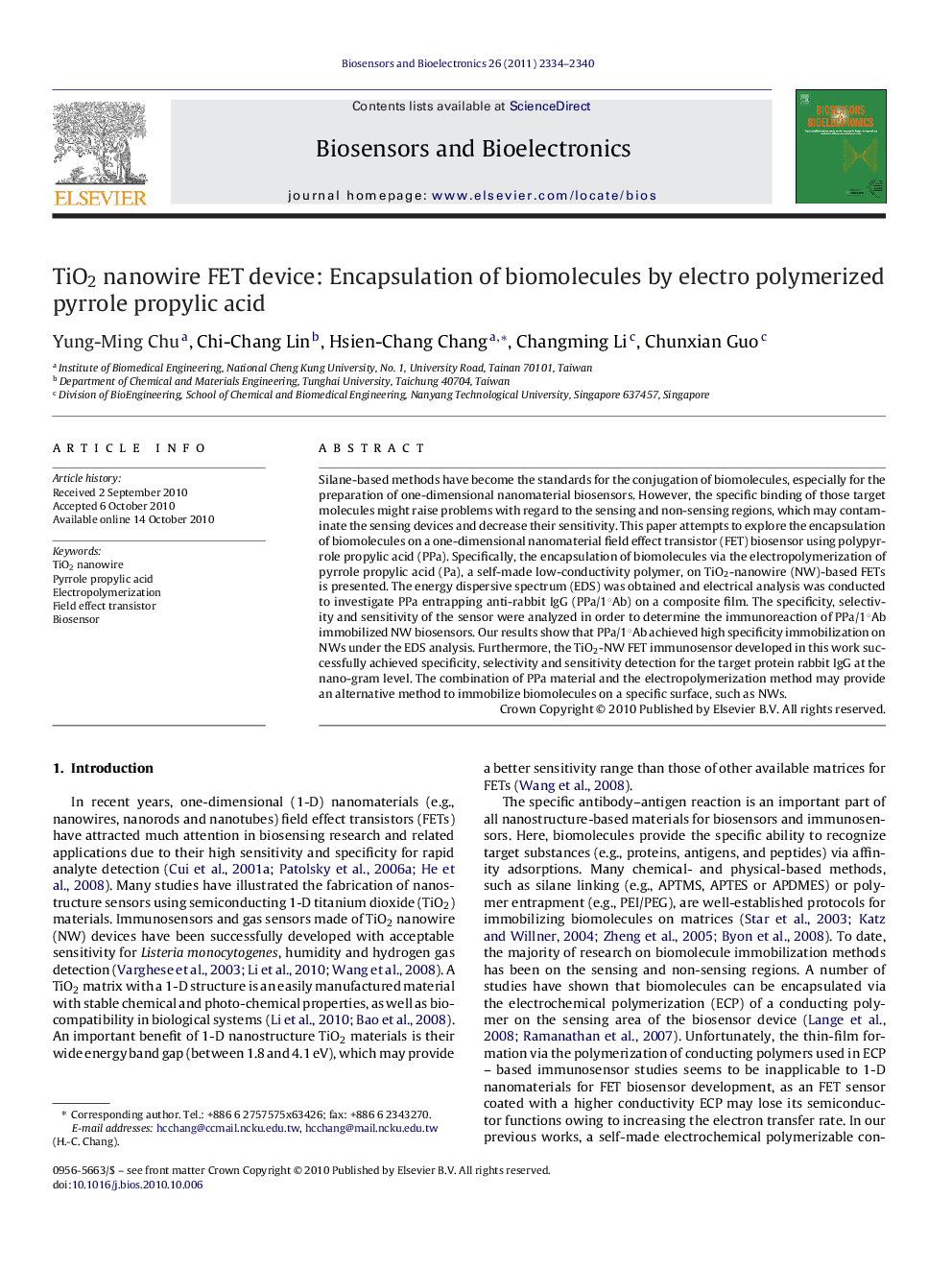| Article ID | Journal | Published Year | Pages | File Type |
|---|---|---|---|---|
| 868202 | Biosensors and Bioelectronics | 2011 | 7 Pages |
Silane-based methods have become the standards for the conjugation of biomolecules, especially for the preparation of one-dimensional nanomaterial biosensors. However, the specific binding of those target molecules might raise problems with regard to the sensing and non-sensing regions, which may contaminate the sensing devices and decrease their sensitivity. This paper attempts to explore the encapsulation of biomolecules on a one-dimensional nanomaterial field effect transistor (FET) biosensor using polypyrrole propylic acid (PPa). Specifically, the encapsulation of biomolecules via the electropolymerization of pyrrole propylic acid (Pa), a self-made low-conductivity polymer, on TiO2-nanowire (NW)-based FETs is presented. The energy dispersive spectrum (EDS) was obtained and electrical analysis was conducted to investigate PPa entrapping anti-rabbit IgG (PPa/1°Ab) on a composite film. The specificity, selectivity and sensitivity of the sensor were analyzed in order to determine the immunoreaction of PPa/1°Ab immobilized NW biosensors. Our results show that PPa/1°Ab achieved high specificity immobilization on NWs under the EDS analysis. Furthermore, the TiO2-NW FET immunosensor developed in this work successfully achieved specificity, selectivity and sensitivity detection for the target protein rabbit IgG at the nano-gram level. The combination of PPa material and the electropolymerization method may provide an alternative method to immobilize biomolecules on a specific surface, such as NWs.
